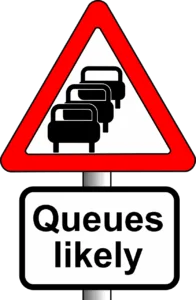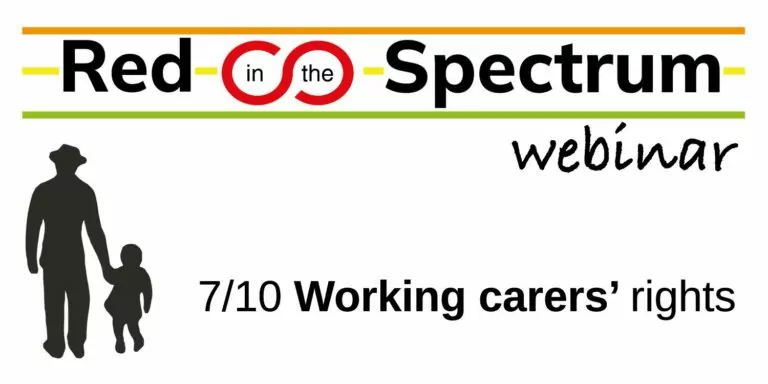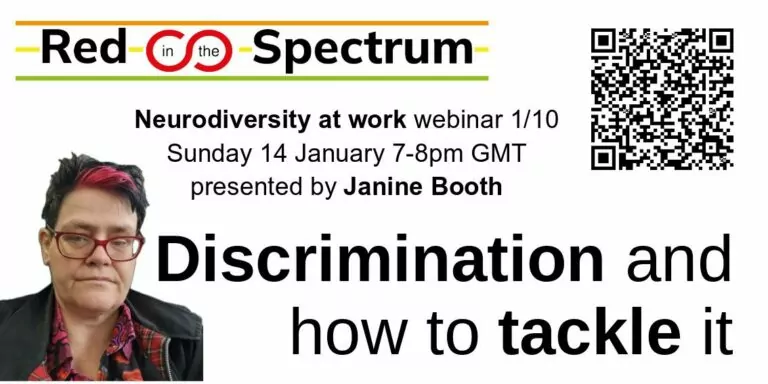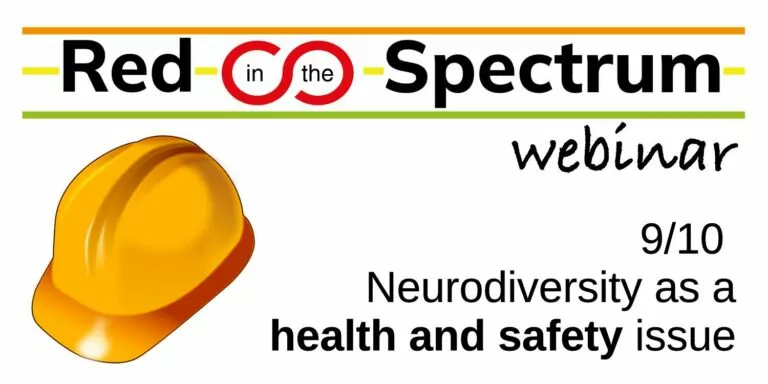ADHD Taskforce Report parts 1 and 2: useful but could go much further
by Janine Booth and Liz Yeates
The ADHD Taskforce Report part 1 was published in April 2025 and part 2 in November 2025.
ADHD Taskforce Report: Headlines
If the government implements all the measures recommended in the ADHD Taskforce Report, it will significantly improve the lives of ADHDers.
However, the report contains itself within a medical or individual model. It repeatedly refers to ‘treating ADHD’ and its recommendations are all about ‘interventions’ with individuals rather than changing systems to remove barriers.
It makes some particularly welcome observations, especially in asserting that ADHD is under-diagnosed rather than over-diagnosed as the right-wing narrative argues; and that better support means employing more workers.
We suggest that ADHDers, our allies and the labour movement demand that the government implements the recommendations (it will undoubtedly try to avoid implementing the expensive ones), but also call on it to go beyond the individual-model focus of the report and address removing collective social barriers.
ADHD Taskforce Report: Individual and financial framing
The ADHD Taskforce Report’s summary begins with the declaration that ADHD, “when unsupported, is a potent route into educational failure, long-term unemployment, crime, substance misuse, suicide, mental and physical illness”. While it is good to see these negative life experiences acknowledged, is it really the case that ADHD is a route to them? Or is it discrimination, distress, hostile environments and social barriers to people with ADHD? We would argue the latter – it is what society does to ADHDers that causes these problems rather than the ADHD itself.
The very next sentence tells us that ADHD costs individuals and the government at least £17 billion. While it rightly points out that this cost is avoidable, the choice to place this in the opening paragraph reflects priorities skewed toward money rather than people.
The Report goes on to argue that “when appropriately supported, people with ADHD can thrive and fully engage in a working life”, implying that working is the primary measure of well-being.
The Taskforce asked its ‘evidence group’ of academics several questions, including “What are the costs of not treating ADHD?”. Not “What are the costs of discrimination against people with ADHD?” or “What are the costs of not enabling schools to include and support ADHD pupils?”, or “What are the costs of not requiring employers to ensure that work is accessible to ADHDers?” The question that the Taskforce chose to ask assumed that ADHD is a problem to be treated, rather than a cohort of people marginalised and distressed by societal barriers.
While the Report rightly calls for “systemic changes at national, regional and local level” across government departments, it offers this systemic change only in how various sectors ‘treat’ and ‘support’ ADHD, not the thoroughgoing removal of systemic barriers that would be genuinely transformative.
ADHD Taskforce Report: Under-diagnosed
One of the ADHD Taskforce Report’s most important findings is that “clinician-defined ADHD is under-recognised, under-diagnosed and under-treated”. It is positive that it recognises this, at a time when there is a rising narrative of ADHD being over-diagnosed.
The Report cites evidence showing that the UK has much lower service recognition and treatment rates of ADHD diagnosis than other European countries. It also points out that there are “significant inequalities in access to care (e.g. minority groups)”, but unfortunately does not go into detail about this or propose measures to address it.
The ADHD Taskforce Report expresses concern about “self-diagnosed ADHD using social media”. Most people who self-identify (a preferable term to ‘self-diagnose’) as ADHD have considered more than just social media. They have likely also obtained information from more credible parts of the internet, and from peers, self-organised groups, and other sources. The reference to social media alone seems like an attempt to trivialise people’s efforts to understand themselves while waiting years for an official diagnosis.
There is also an issue with the regulation of those who offer assessment and diagnosis. The Report proposes stricter regulation of ADHD diagnosticians and service providers. However, it does not propose the most effective form of strict regulation, which is to bring them into public ownership and accountability, whether as part of the NHS, local government or something else.
While reactionary narratives see the rise in ADHD diagnosis as evidence of fakery, parental excuse-making or gaming the system, the ADHD Taskforce Report argues that it is “likely due to multiple factors”. These include increased awareness, changes in diagnostic criteria and NICE guidelines (eg. co-diagnosis with autism was previously not allowed, but is now), previous missed or misdiagnosis (especially among women), impacts of the Covid-19 pandemic, the perceived requirement for a diagnosis to access support, and recent scientific evidence that ADHD is not restricted to childhood.
In our view, ADHD is not over-diagnosed, but it is over-pathologised. Despite some claims, people diagnosed as ADHD are definitely ADHD, and need the rights and services that diagnosis (might) open to them. However, what society calls ADHD is a naturally occurring human neurological variant which our neuronormative society treats as a ‘disorder’ or ‘deficit’, with ‘symptoms’, because it sees cognitive differences as flaws.
As the ADHD Taskforce Report points out, both the American Psychiatric Association’s DSM-5 and the World Health Organisation’s ICD-11 diagnostic systems group ADHD as a neurodevelopmental disorder. That’s because both those systems are medical-model and pathologising. Notoriously, both used to list homosexuality as a mental disorder.
ADHD Taskforce Report: Unsupported and untreated?
The ADHD Taskforce Report repeatedly refers to ‘unsupported ADHD’ and the need to ‘treat ADHD’.
It urges the provision of more support, which would be very welcome and helpful to a lot of ADHDers. However, this framing individualises a social issue. Behind the acknowledged truth that individuals need support is the question of why individuals need support – we would argue, because of the distress and discrimination that our neuronormative society creates.
The ADHD Taskforce Report also asserts that services must focus on the whole person. For sure, focusing on the whole person is preferable to focusing just on an ADHD trait – for example, a child’s ‘disruptive behaviour’. However, it would be better still to consider the whole person in a wider social context. Why is their behaviour disruptive? A ‘whole person’ approach might recognise factors such as distractibility, problems at home and so on, but a wider approach might also ask whether classes could be smaller and lessons more engaging.
There are further examples of this issue, including the call for “early, needs-led support in childhood and timely clinical intervention”. That would be better than no support or intervention, but again, it is focused on the individual ADHDer rather than looking for wider social change.
Where the Report argues for “timely recognition and early support of suspected ADHD and neurodivergence across all settings”, we would add that we also need to change those settings so that they work on the assumption that the cohort they are dealing with is neurodiverse and organise accordingly.
While the call for support for individuals is welcome but not enough, the ADHD Taskforce Report’s repeated calls for ‘treatment’ of ADHD, and its warning of the dangers of leaving it ‘untreated’, could have more negative connotations. This call is based on the assumption that ADHD can and should be treated.
This frames ADHD as a problem, even an illness, that needs to be suppressed or dealt with. The Report even suggests dealing with ADHD in a similar way to dealing with diabetes. But ADHD is not an illness. Rather, it is a neurological variant which brings strengths as well as struggles, with the latter caused by social barriers rather than by the ADHD itself.
When the ADHD Taskforce Report recommends equipping teachers to “reduce ADHD symptom expression” among schoolchildren, it is in effect recommending that teachers learn to stop ADHD kids from being themselves, which is unfair on teachers as well as potentially harmful to kids.
Although the ADHD Taskforce Report mentions the possibility of “environmental adaptations for all”, it does not follow this up, so it appears to sit out of place with the overall thrust of the Report.

ADHD Taskforce Report: Why are we waiting? And while we are waiting …
Waiting times for ADHD assessment and diagnosis are beyond crisis point. The ADHD Taskforce Report acknowledges and addresses this, including noting that waiting times have reached 10–15 years in some areas of the UK.
Its call for “an increased workforce capable of supporting and making ADHD diagnoses” includes “recognising ‘ADHD specialists’ in primary care and education who can conduct assessments”. This is welcome, so long as it means the creation of new jobs rather than adding this as a specialism to existing (already overworked) school staff.
The Report’s discussion of waiting times is one of the few places where it acknowledges class inequalities, noting that “the most disadvantaged groups (highest risk, poorest households, those who have been in the criminal justice system) are the least likely to be able to afford private assessments and treatment.”
Later in the Report, it acknowledges that “All the impacts of ADHD (e.g. premature mortality, suicide, poor physical and mental health) are also influenced by the wider social determinants of health (e.g. poverty, housing, unemployment, discrimination, among many others).”
The existence of private diagnosis creates a further problem, with these diagnoses not necessarily recognised in other areas. The Report recommends an ‘ADHD passport’ to address this. It also advocates “nationally agreed minimum contracting standards that all commissioners must follow”. No doubt this would bring improvements, but much more significant improvements could be achieved by scrapping the system of commissioning and providing services directly.
The ADHD Taskforce Report acknowledges the urgency of early diagnosis for children but seems less alert to the damage to an adult of waiting years for an assessment. It’s ADHD – patience is not our strong point!
Leon Trotsky wrote about shortage and queueing in Stalin’s Soviet Union. He made the point that where you have a queue, you then need a gendarme. Similarly, waiting lists generate their own resource-hungry bureaucracy, managing return call lists, replying to enquiries about wait time, recording changes in circumstances, and more.
Obviously not confident that waiting lists will shorten significantly any time soon, the Report also considers support measures for those on the waiting list. Perhaps surprisingly, this does not include peer support.
To assist parents, it recommends “unguided app-based parenting support”, noting the attractiveness of this as a “low-cost solution”, despite the report noting that apps are significantly more effective when supported by a human.
While it is useful that the Taskforce has looked at digital support methods, we are concerned that ADHDers who find it hard to self-manage will be denied access to continue on the assessment pathway. Co-occurring demand avoidance and other features of ADHD can inhibit self-care.
ADHD Taskforce Report: Mental health
Noting that mental health can deteriorate while waiting for diagnosis, the ADHD Taskforce Report recommends support in this area. Good.
The Report gives some attention to poor mental health in people with ADHD. But it frames this as ‘co-occurrence’ rather than examining how discrimination and distress experienced by ADHDers might have negative impacts on our mental health.
It notes that ADHDers report impacts on them of negative attitudes around ADHD. However, when the Taskforce itself blames ADHD (rather than societal hostility) for suicide, ill-health and criminality, it is hardly surprising the public has a problematic understanding of ADHD.
The Taskforce advocates more mental health support in schools, which would be welcome, but does not address the ways in which the school system makes kids mentally unwell. For example, the government could boost the mental well-being of all schoolchildren by abolishing high-stakes testing of primary school kids.
Moreover, we are aware that some people have been refused access to mental health services if they are receiving care from an ADHD clinic pharmacological service.

ADHD Taskforce Report: What’s stopping us earning and learning?
The ADHD Taskforce Report notes that between 20 and 34% of young people in England who are not in education, employment or training (NEET) are likely to have ADHD, most of them undiagnosed. As a solution, it offers early intervention with ADHD kids.
Although this would be welcome (so long as that intervention is appropriate and not harmful), it would be more effective to look at how education, employment and training could become more ADHD-inclusive. However, the only recommendations for education are ‘interventions’ focused on individual support, and there are no recommendations to require employers to remove barriers.
While the ADHD Taskforce Report concentrates on measures to get ADHDers, especially those who are undiagnosed, engaged in working life, this overlooks the many who are fully diagnosed, engaged in working life, but are not coping or thriving in an oppressive work environment.
There is scant mention in the Report of supporting ADHDers to make the most of their strengths, and where this is mentioned, it is only as a recommendation to careers advisers, not, for example, to the employers with which the person might pursue that career.
For example, many ADHDers are capable of hyperfocusing on a subject that particularly interests them (as are many autistic people). But the UK’s school curriculum is too rigid to allow ADHD kids to make the most of this. A better approach to learning history, for example, might be to allow schoolchildren to study a historical subject that interests them, however niche that subject may be, rather than compelling them to study a subject from a limited, predetermined list of historical events.
In education, the ADHD Taskforce Report advocates a ‘whole school approach’, but without explicitly acknowledging that this would need a social-model approach which takes account of barriers and social relations within the school. It notes that there is not much research on the impact of whole school approaches on neurodivergent children and on what types of support in educational settings are most effective. The unstated implication is that more research would be useful.
The Report makes an approving mention of Partnerships for Inclusion of Neurodiversity in Schools (PINS), “a programme that focuses on providing whole school support for neurodivergent children in primary schools (including ADHD)”. The programme offers five days of specialist support to each participating school (eg. speech and language therapists, occupational therapists, educational psychologists). But there is no mention of the programme helping schools to change their practices to be more neuro-inclusive.
The ADHD Taskforce Report also states clearly that adopting the whole school approach will require investment in schools and staff training. But while it acknowledges that there is inadequate training, resources and staffing to support the needs of children with ADHD, unsuitable physical environment, an over-emphasis on repeated testing and memorising and limited flexibility around the curriculum, it does not make recommendations to address these issues, or other issues such as the school day’s start time.
ADHD Taskforce Report: Some more positives (with some caveats)
Helpfully, the ADHD Taskforce Report asserts that “ADHD is not the remit of health alone”. However, its argument is limited to the contributions that other government departments and areas can make. It is not explicit that the reason that ADHD is not the remit of health alone is that the negative experiences of ADHDers are not, fundamentally, about our health. ADHD is not an illness. Our negative experiences are driven by discrimination and other social barriers.
The Report recommends that support for individual ADHDers be made available whether or not they have a formal diagnosis. This is welcome. At present, support for undiagnosed people is provided only infrequently and informally, and opening it up to more people would be beneficial. However, there is a danger that uncoupling support from diagnosis may become a pretext for accepting lack of funding for assessments, and that it fails to recognise the importance of an actual diagnosis. It will also place responsibility on unqualified support staff to informally diagnose.
The Report recommends that ADHD services are digitised and data improved. This is, without qualification, a good recommendation.
It usefully points out that the current practice of having separate services for ADHD, autism and mental health, despite their frequent co-occurrence, creates clinical risk.
The Taskforce correctly states that “medication should not be the only option available to people with ADHD but should be offered when needed”. However, it is also important for services to adapt to people’s changing needs. If a person stops medication for a period of time, there needs to be an easy process to restart as soon as possible if required.
The Report also advocates “Societal changes in attitude and the provision of appropriate support”. This is welcome, but society needs to change more than its attitudes and levels of support. It needs deeper, structural changes to accommodate the ADHD way of thinking.

ADHD Taskforce Report: Nothing about us without us?
Fewer than a half of the Taskforce’s twelve members are listed as having “lived experience”, and it is not clear whether this means people with ADHD, or whether it also includes, say, parents. Several are included in other capacities as well as their “lived experience”.
Moreover, there is no explanation of how they were selected or who they represent other than themselves. The UN Convention on the Rights of Persons with Disabilities requires signatory states (of which the UK is one) to consult with and actively involve disabled people “through their representative organizations”. We can see no evidence that the Taskforce has done this.
The ADHD Taskforce Report acknowledges that many people with lived experience prefer the term ‘neurodivergence’ and to see ADHD as difference rather than deficit. But frustratingly, it does not pursue this or apply it to its investigations.
ADHD Taskforce Report: Recommendations
Amongst other things, the ADHD Taskforce Report recommends better data capture, urgent action to address diagnosis waiting times, and better support for those waiting for diagnosis.
These recommendations are all fine, and if all were implemented, the lives of ADHD folk would improve. However, none of them addresses the fundamental problem of a neuronormative society.
The authors propose “an invest to save model”, which reads like a somewhat diffident plea for the government to spend money. Certainly, the lack of resources currently being made available for ADHD underpins many of the existing problems and an increase in resources is a prerequisite for addressing them – as is, as the Taskforce points out – the employment of enough workers in schools to provide the support.
The call for “clear signposting to local organisations that can provide information and support” falls a little flat in the context of the decimation of the voluntary sector. Good luck in finding such an organisation in your area!
In some aspects, the Report makes recommendations that cannot be carried out within its medical or individual model approach – for example, its suggestion of a community-based Integrated Youth Service (IYS) for 12-to 25-year olds as is run in Canada. To be effective, such a service would also need to take an intersectional approach: ‘Neuroqueer’, run by Trade in Leicester, is a good example of this.
ADHD Taskforce Report: Conclusion: Useful in parts, but flawed
The Taskforce points out that “some people with ADHD can successfully self-manage symptoms and adjust their environments and lifestyle so the impacts of ADHD are minimised.” While this statement is true, it also highlights two of the shortcomings of the ADHD Taskforce Report.
Firstly, it does not probe why some people are more able to do this than others. One of the key factors is likely to be class. The more money and security you have, the easier it is to adjust your environment and lifestyle, and to access equipment and implement strategies that will help.
The Report accepts that some people with ADHD can thrive, but does not examine the factors that help them thrive. Maybe this is because it the answer would unavoidably point to societal change.
Secondly, it assumes that the goal is to minimise the impact of ADHD. Why assume that? What about the positive impacts of ADHD? We want to minimise the impacts of discrimination and barriers, rather than of ADHD.







